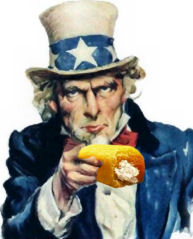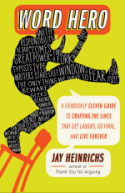(Gulp)
 Monday, April 23, 2007 at 12:25PM
Monday, April 23, 2007 at 12:25PM  Quote: “In great and growing numbers, people are voting with their forks for a different sort of food system.” Michael Pollan in the New York Times Sunday Magazine.
Quote: “In great and growing numbers, people are voting with their forks for a different sort of food system.” Michael Pollan in the New York Times Sunday Magazine.
Figure of Speech: metonymy (meh-TON-ih-mee), the part-whole swap. From the Greek, meaning “name change.”
If we are what we eat, America is a Twinkie. Michael Pollan, author of The Omnivore’s Dilemma, explains why our poorest citizens are the fattest: a calorie of carrot costs almost five times as much as a calorie of cookie. That’s because the government subsidizes overproduction wheat, soy (which provides much of the fat in processed food) and corn (syrup).
Blame the Farm Bill, which is up for its five-year renewal. Actually, it’s not a farm bill, Pollan asserts. It’s a “food bill.” The legislation “needs to be rewritten with the interests of eaters placed first.” Eaters are beginning to have a say, as schools expel vending machines and Wall Mart hawks organic foods. Pollan describes the shift with a metonymy, one of the four essential figures of speech (along with metaphor, synecdoche, and irony). A metonymy takes a part of something and makes it stand for the whole.
Napoleon’s army marched on its metonymical stomach. Pollan says it’s our turn to take the food crisis and stick a fork in it. As a life-long eater, Figaro salutes his utensil.
Snappy Answer: Congress’s problem isn’t corn or soy. It’s pork.
For more on the metonymy, see page 212 of Figaro’s book.


Reader Comments